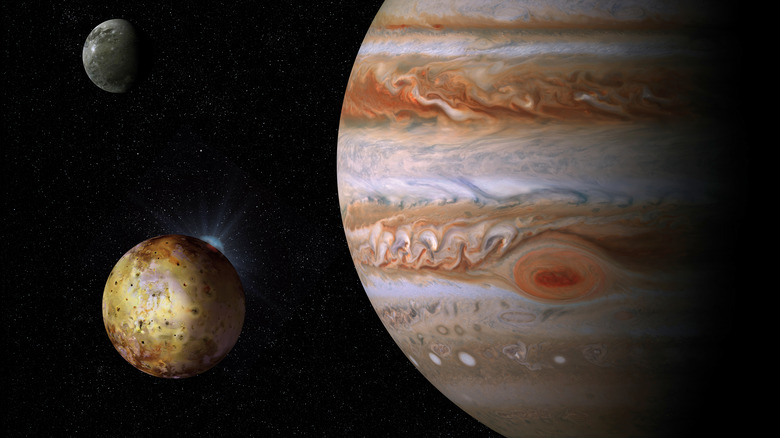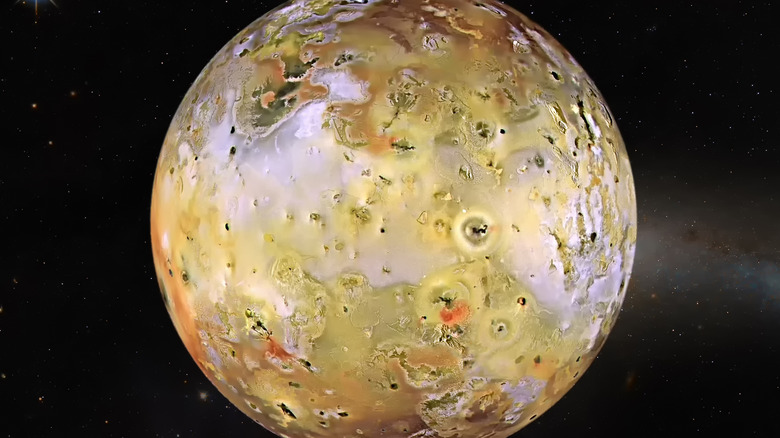Is Lava Really Forming Dunes On Jupiter's Closest Moon?
About 484 million miles from Earth, Jupiter, the largest planet in the solar system, rules the outer orbits. It is so massive that some say it is a solar system in itself. A new study conducted by a team of Canadian astronomers at the University of British Columbia suggests that Jupiter has more than 600 moons, many as small as 800 meters in diameter. Jupiter's size is responsible for having once attracted its moons, forcing them into orbits. NASA, with a more conservative view, says that Jupiter has 53 named moons and 26 moons that have not been officially named yet; combined, they total 79 moons.
Some of these moons are very well known like Europa, which hosts a global ocean under an ice-crusted surface, and which many scientists believe is the best location to find life in the solar system. Ganymede is the largest moon in the entire solar system, and Calisto has craters that bear witness to the early days of the formation of the solar system. Among the crowded and irregular Jupiter orbits, another moon stands out for being the most volcanically active body in the solar system: Io.
The volcanic activity in Io is caused by a tug of war that has been going on for eons between Jupiter and the moon. The gravitational forces are so extreme that the solid surface of Io rises and lowers as if it were liquid, creating solid "tides." But a new study says there might be something more happening within this violent moon.
Strange winds and sulfur frost shape Io's dunes
Never-ending fields, towering dunes, and irregular ridges on Io could be formed by winds and lava flowing under a crust of sulfur dioxide ice. A study published on April 19, 2022, in Nature Communications reveals a strange process that was previously ruled out. Science News reports that geological features that resemble dunes have been spotted on Io for more than 20 years. However, these features had been discarded as dunes because Io's atmosphere is too thin to have winds, and only winds form dunescapes.
Researchers investigated possible wind-blown transport systems happening on Io. The team was inspired by volcanic activity on Earth where bursts of steam occur when lava meets water. While Io has no water, it is abundant in sulphuric oxide frost. On Earth, sulfur dioxide is found as a gas, but on Io, it covers the surface condensing as frost or ice crystals due to the extreme conditions of the moon.
The paper says that shallow "subsurface interactions between lava and Io's widespread sulfur dioxide (SO2) frost can produce" enough gas to transport sediment, shape the landscape, and create dunes. The moon is now added to "a growing list of bodies" that have a weak atmosphere but where winds can be generated. "In some sense, these [other worlds] are looking more familiar," George McDonald, lead author of the paper says, adding, "but the more you think about it, they feel more and more exotic."

